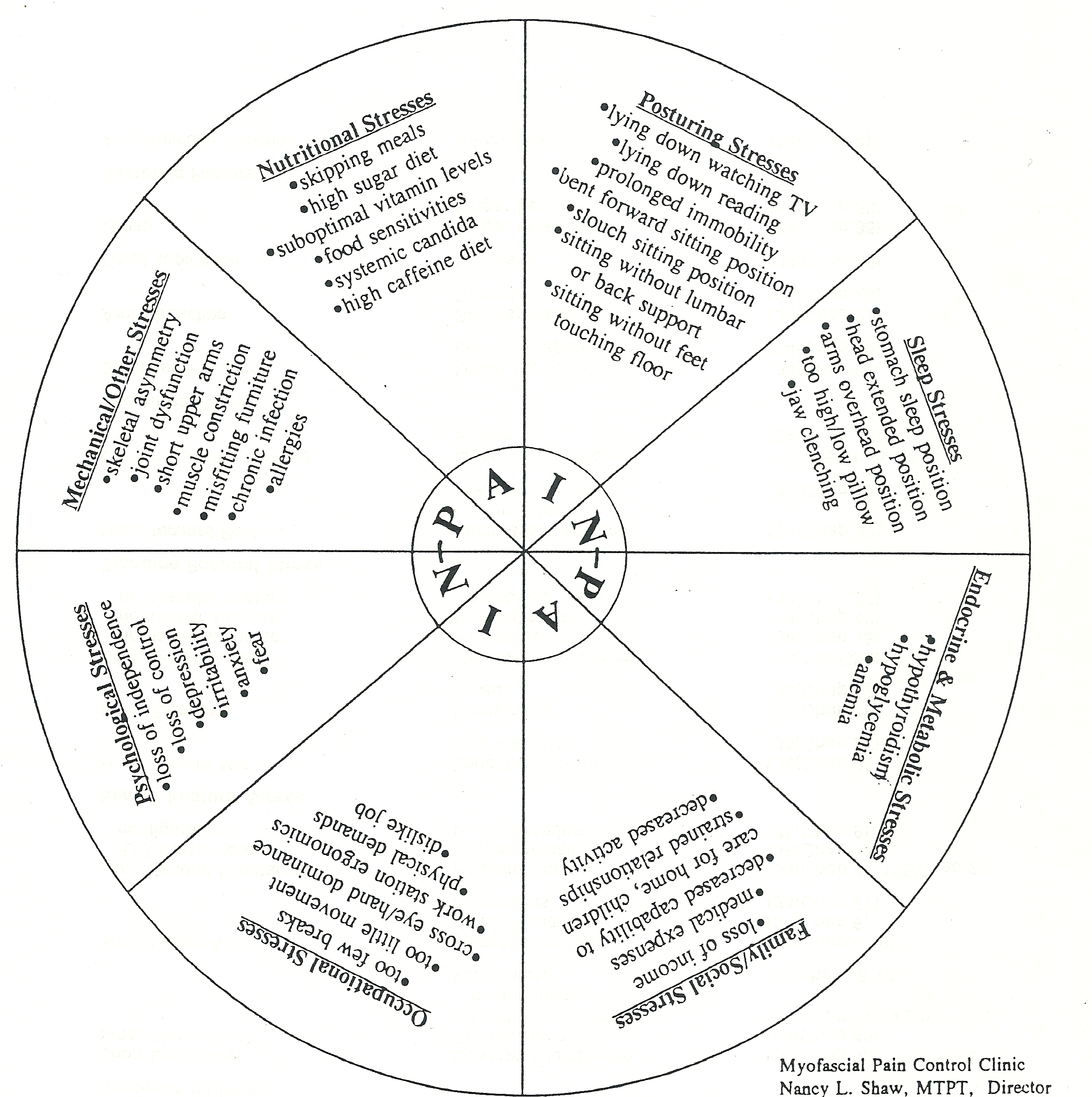Perpetuating Factors: How to Connect the Dots
As the Bible (the “Red Bible,” that is!) says:
“When active trigger points in any muscle fail to respond to treatment, with few exceptions, one or more perpetuating factors need to be identified and resolved.” *
Perpetuating factors are stressors. They prevent muscles from returning to their pain-free, resting position.
The same condition that activates a muscle to develop a trigger point might also be the same factor that perpetuates the problem.
For example: a congenital short leg can activate and perpetuate a quadratus lumborum (QL) pain complaint. Carrying a child on a hip can further perpetuate or reactivate a QL problem that was originally activated by a short leg. The client might have compensated perfectly well for her short leg until the mechanical stress of carrying a child was added.
Classically, perpetuating factors are divided into three categories:
- Biomechanical Factors (repetitive motion, posture, sleeping position, etc.)
- Biochemical Factors (diet, metabolic, hormonal or other medical considerations)
- Psychosocial Factors (depression, anxiety, family, financial or work stress, etc.)
If after three or more treatments your client returns with the same pain pattern, ask yourself:
Have I connected the dots between the client’s pain/dysfunction and postural habits, work/family stressors or underlying disease processes?
In my experience, the most common Perpetuating Factor is posture, either non-ergonomic workplace positions, baseline posture, or sleep position. So look first to these areas. Then allow 5 minutes in your session to instruct your client in corrective exercises or posture guidelines.
The other Perpetuating Factors fall into the remaining categories. Careful observation and gentle probing can provide clues. Ask if the client notices the pain more in certain situations, or simply ask if they have any idea what might be the real source of their reoccurring pain?
You might need to refer your client out for a potential biochemical factor like hypothyroidism or hypoglycemia. Or they might give you a clue that they are under psychological stress.
As Dr Travell would say: “If you listen long enough, the patient will always tell you what’s wrong.”
Look at the chart below. Consider what you already know and then check the other factors.
As a smart and caring therapist I challenge you to become a Pain Detective: collect the clues and see how they “build a case” for perpetuating the pain that plagues your client.
Have fun connecting the dots of Perpetuating Factors!
* Myofascial Pain & Dysfunction the Trigger Point Manual Vol 1, Drs Travell J and Simons D 1999
Connect the Dots
Common Myofascial Perpetuating Factors


